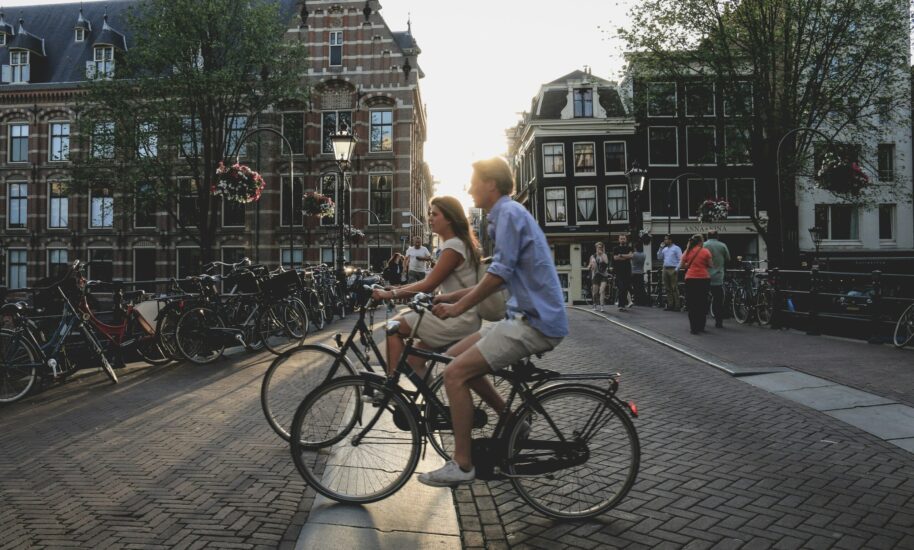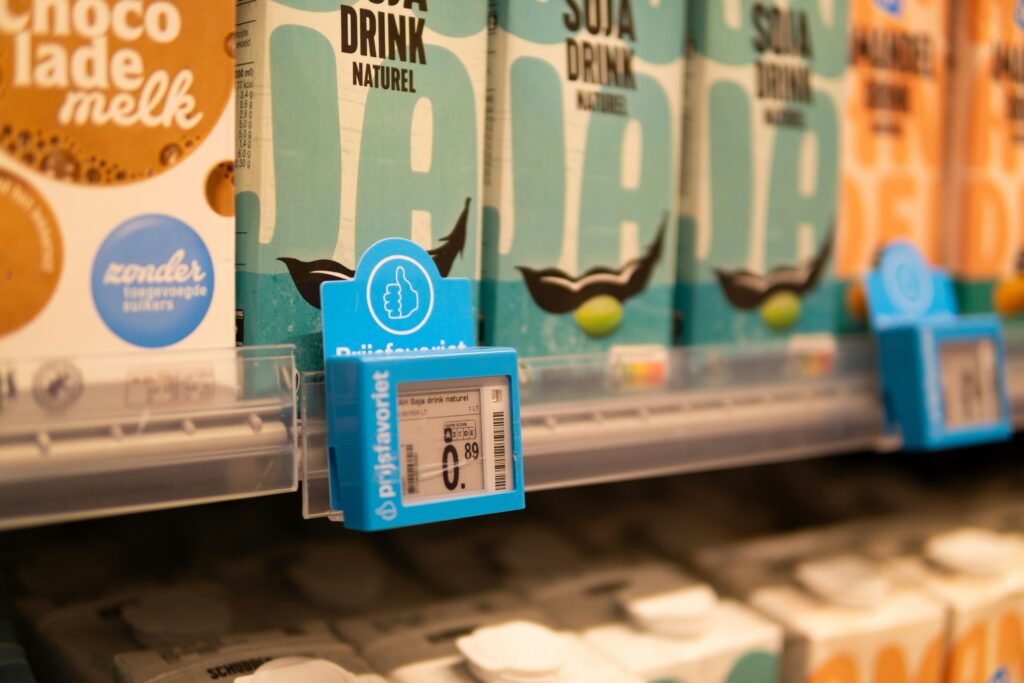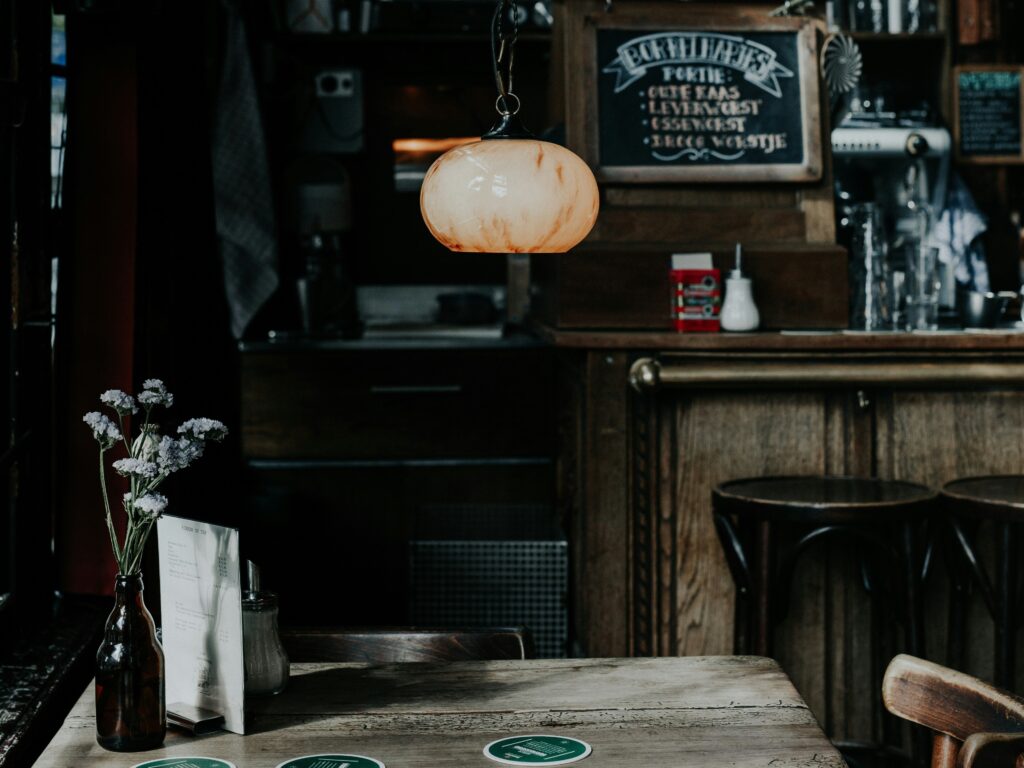5 insider tips for Amsterdam

Your suitcases are packed, your accommodation booked, your journey planned to the minute, you’re well informed about the highlights of Amsterdam, maybe you’ve even planned a tour or two and made a few reservations at your favourite restaurants? Great, you’re almost perfectly prepared for your time in our exciting city! Almost, you think? Well, when you’re not busy visiting museums or drinking coffee, you’ll also be swimming in the everyday life of Amsterdam. And you’re bound to notice a few things that are a little different to what you know from home. To help you get to grips with everyday life in Amsterdam and so that you are no longer too surprised by the local customs, we have put together the most important insider tips for your trip to Amsterdam 😉
Insider tip 1: Bicycles rule the city
Probably not too new for you, but just to be on the safe side we’ll mention it again: cyclists enjoy supremacy in Amsterdam. They are the kings and queens of road traffic – but the crowning glory is missing: no cycle helmet. Yes, you read that right. Helmets are simply considered too unfashionable and unnecessary by the people of Amsterdam. The Dutch are a proud people and boast about their cycling skills. And rightly so! Despite the enormous speed and even greater traffic chaos, there are no more accidents here than in other big cities. If you’ve got it, you’ve got it, we say.
That sounds a bit reckless, of course, but the people here know exactly how to behave on the streets of Amsterdam without anything happening. The most important thing is communication: put your hand out when turning and ring the bell once more when overtaking if there is not enough space. And yes, people ring the bell all the time, but in most cases it serves more as a warning or precaution than as a complaint. And that’s a good thing, because Amsterdammers only brake or get off their bikes when necessary – not even at traffic lights, zebra crossings or other “obstacles”.

Incidentally, there are said to be significantly more bicycles in Amsterdam than inhabitants, around 2 per capita for the current population of 935,000. However, they are not only found on the streets, but also in large numbers in the canals. Every year, the city recovers around 12,000 to 15,000 “lost” bicycles from the canals using boats with grabbing arms. A typical Amsterdam scenario and an insider tip worth knowing about Amsterdam 😉.
You want it authentic?
If you’d like to get around like the locals on a typical means of transport and learn some exciting facts about the city at the same time, why not join us on our bike tour through the city centre? For those of you who prefer to avoid the hustle and bustle of the city centre, we have another insider tip: we also like to take a trip to Amsterdam’s idyllic north, which is far less developed for tourism. Here we can enjoy a quiet bike ride together away from the hectic city traffic.
Insider tip 2: Shopping as relaxation therapy
Part of everyday life in Amsterdam is, of course, going on a little shopping trip to the supermarket and stocking up the fridge at home. The most popular supermarkets in Amsterdam are Albert Heijn and Jumbo, but Aldi and Lidl are also popular. If you want to try some typical Amsterdam delicacies, we’d love to take you on a food tour of the city and give you lots more insider tips for your trip to Amsterdam…
What can often degenerate into stress because there is not enough time to shop or your favourite pudding is no longer on the shelf, is used by the people of Amsterdam as a little break from the often turbulent city life. Noisy supermarkets? Not a chance! Shopping here is calm and relaxed – and anonymous! You’ve probably already been in the situation where you just wanted to buy one or two things and then had the misfortune of standing in a long queue at the checkout. To avoid this, the people of Amsterdam rely on so-called “mandjeskassas” (basket checkouts). At these small self-service checkouts, you can quickly scan and pay for your purchase yourself – or even take a scanning device with you and diligently scan as you walk through the rows of shops. Time-efficient, anonymous and an absolute insider tip😉.

Not a full wallet
Oh yes, and how do you pay here? Of course, by card! Almost nobody has cash in their pocket here, as you can “pin”, i.e. pay by card, in almost all places in Amsterdam. In some shops, it’s not even possible to pay in cash – it’s “card only”. The only neighbourhood where cash is still really needed is the red light district. We’ll tell you why on our informative red light tour 😊. If you do want to pay in cash somewhere else, the people of Amsterdam like to round it up a little – the lowest amount of change is 5 cents. Super practical, so the annoying 1 and 2 cent pieces don’t multiply in your wallet. Don’t forget: Always take your receipt with you! You have to scan it at the barriers at the exit before you leave.
A little tip: You can go shopping every day in Amsterdam, even on Sundays. So you don’t need to stock up on groceries the day before, but can always spontaneously set off for a new little “relaxation therapy” like the people of Amsterdam.
Insider tip 3: Not all cafés are the same
If you’re looking for a cool coffee or brunch spot in Amsterdam and google “café”, Google also spits out cafés that look a little different, namely cosy and brown. That’s exactly why they are called brown cafés or “Bruin Cafés” in Dutch. These places are nothing like the colourful and social media-compatible spots that you can also find en masse in Amsterdam. But they are iconic and definitely worth a visit!
In fact, these are not just cafés, which we associate primarily with coffee and cake, but rather pubs. For Amsterdammers, the characteristically dark interior is a must for the typical Amsterdam “Gezelligheid”. This is where people chat after work and enjoy a well-deserved beer. And all of this in a very sociable and cosy environment: brown walls and ceilings (often old and discoloured by tobacco), historic furnishings with lots of wood and often without music. There’s a nostalgic feel here in this otherwise very hip city. In typical Amsterdam style, the tasty “Biertje” is of course at the top of the drinks menu. Besides Heineken, have you tried any of the other regional beers that are often produced by neighbouring breweries? We can only warmly recommend Brouwerij ‘t IJ to all beer enthusiasts.

Fancy a little nibble?
A cosy visit to the Bruin cafés should not be complete without good conversation and a drink: a typical Dutch “borrel”. Basically, “borrel” means nothing more than “drink”, but it means so much more. When the people of Amsterdam say “borrelen”, they are not just thinking of a beer or a glass of wine. Rather, it’s about a cosy get-together, which they celebrate with a drink, but also with a few tasty snacks on the side. Typical “Borrelhapjes” include bitterballen, cheese cubes, Spanish tapas, Asian satay skewers or a “Bittergarnituur” consisting of all kinds of cheese and sausage pieces. Sounds cosy? Then mingle with the people of Amsterdam and visit one of the “Bruin Cafés”!
Here are a few recommendations for you:
- Café t’ Sluisje: Tue-Thu & Sun 11:00-0:00, Fri-Sat 11:00-1:00
- Café Hoppe: Sun-Thu 9:00am-1:00pm, Fri-Sat 9:00am-2:00pm
- Café t’ Smalle: Mon-Thu & Sun: 10:00am-1:00pm, Fri-Sat 10:00am-2:00pm
Insider tip 4: Leaning, crooked, Amsterdam
One of the first things you are sure to notice in Amsterdam are the many slanted houses. True to the motto “crooked is in”, almost no house here stands upright. Instead, they often lean to the right and left and even come towards you on the streets. This is why they are often referred to as “dancing houses”. However, this is not a trend, but is linked to Amsterdam’s history.
You may have heard that Amsterdam is also known as the “Venice of the North” because of its many waterways and bridges. But that’s not all: Amsterdam is also built on wood! That’s right, under Amsterdam there was actually only swampy, unpaved muddy ground. In order to build something in this area, the people of Amsterdam drove long wooden piles into the ground, filled them in and then put fancy little canal houses on top. So far, so good. There was just one small problem. Due to the former direct connection to the sea, which Amsterdam still had until 1930, the tides were very noticeable in the canals. While the high tide flooded the entire city, the wooden piles under the houses were sometimes exposed at low tide. And what happened? Exactly, the wood started to rot and the piles became rotten. This caused them to sink unevenly – and the houses with them.

A different way of living
Just like the outside, it often looks the same on the inside. Shelves for which there is no 90-degree corner, crooked shutters and sliding wardrobe doors on uneven floors. Quirky, isn’t it?
But don’t panic: If the houses lean towards the street, they are not dilapidated and you can walk past them without a care in the world. In the past, goods were stored on the upper floors of the houses and pulled up on the many hooks that you can still see on the houses. The stairs were far too narrow. The Amsterdam architects then deliberately sloped the houses so that the goods wouldn’t drag on the walls or even damage the windows. Pretty clever 😉
Insider tip 5: Smile, please!
Last but not least, a very valuable insider tip for standing out in Amsterdam: Friendliness is the key! The Dutch are generally known for being a courteous and friendly people. You will see smiling and cheerful people on every corner. They are also happy to help you with any questions you may have. So don’t be afraid to approach the people of Amsterdam, you’ll strike up a conversation with them straight away.
Amsterdam’s friendliness is also evident on public transport, for example. When boarding and checking into the trams, Amsterdammers greet the drivers and tram attendants in the small service cabin. A “Fijne dag” is also a must at the end. So put on a smile and let yourself be fascinated and carried away by the vitality and typical customs of everyday life in Amsterdam!

